- Jake Worthington at Faster Horses Festival: A Preview
- The Faster Horses Festival: A Preview of Michigan’s Premier Country Music Extravaganza
- Ryan Bingham at Extra Innings Festival
- Morgan Wade at Extra Innings Festival, 2024
- Sheryl Crow wows fans at Extra Innings
- Country Music Legend Toby Keith passes at age 62
Review: McCartney & Wings’ Remastered 1976 “Rock Show” Concert
As far as live music goes, 1976 was one of the most eventful years of that decade. Frampton Comes Alive was released in January. Bob Dylan’s Rolling Thunder Review was in full swing for the first part of the year. Keith Moon, in a prelude to his early demise, collapsed ten minutes into The Who’s March 9 concert at the Boston Ballroom. Eric Clapton received flack for erratically uttering racial slurs at an August 5 concert in Birmingham, England. Led Zeppelin’s live concert The Song Remains the Same was released in October. The Band played their last show on October 25 (later released on film as The Last Waltz) at Winterland Ballroom in San Francisco. Fans were certainly getting their share of entertainment.
Even though the Beatles had been split for six years, they were still very much on the popular music radar during this year as well. In a tragic turn of events, Beatles’ long-time road manager and confidante Mal Evans was shot and killed by police in L.A. during a confrontation that involved Evans brandishing what was later determined to be an air rifle. Saturday Night Live producer Lorne Michaels offered half-jokingly to pay The Beatles $3000 to reunite live on the show, while concert promoter Bill Sargent very seriously offered them $30 million. Both offers were ignored. EMI Records re-released the original 22 Beatles British singles, and they all hit the UK charts at the same time. Harrison was taken to task in U.S. court for copying the Chiffons’ “He’s So Fine” in the melody and chord structure of “My Sweet Lord.” It seemed the public had no intention of wavering in their fascination for the fab four.
Most eventful in the ex-Beatles’ activities during this year was McCartney’s Wings over America tour, which started in Fort Worth on May 3 and ended in Los Angeles on June 23. They played 31 shows to 600,000 people throughout the US and Canada, traveling via private jet back and forth from shows to rented mansions in central locations (no doubt to ease the travel burden on Paul and Linda’s kids, who toured with them). This tour marked the first time since 1966 that any Beatle had toured North America. As a result, the concerts were pandemonium. Fans were treated to live versions of Beatles’ hits as well as the increasingly thick catalogue of hits coming from McCartney’s solo/Wings albums since 1970. Tour footage from Wings Over America was captured from four separate shows and released as Rock Show in 1980, first in theatres and then on Betamax home videocassette format.
After decades of speculation on whether or not this release would see the light of day in true digital format, fans have finally been rewarded with a digitally re-mastered version of this concert – in its complete 30-song glory. Due for a mid-June DVD release, select theatres around the world have been featuring one-night screenings of the film this week in advance of its availability in stores. OnStage Magazine received an invitation to review an advance copy of the film online. It is an emotional, bombastic, intense, fun, and dramatic two hours of live musical performance – both aurally and visually.
The 1976 incarnation of Wings was undisputedly the greatest of their 8-year stretch, and McCartney has agreed with this assessment in subsequent interviews. Along with Linda McCartney on keyboards and backing vocals, the band features ex-Moody Blues singer/guitarist Denny Laine (the only steady Wings member since the band was formed in 1972), the rambunctious but air-tight Joe English on drums, and 23-year-old guitarist Jimmy McCulloch who at the time boasted the odd credit of being the youngest musician ever featured on a UK number one hit (Thunderclap Newman’s “Something in the Air” in 1969, when he was 17 years old). A horn section also appears sporadically to accentuate when needed. Each musician delivers consistently and energetically. McCartney occasionally hands over lead vocal duties to Laine and McCulloch in the spirit of it being “Wings,” but of course he remains the focal point for the duration of the show. The band is set up close together for maximum eye contact and musical synergy, which sets this concert apart from many we see today with musicians using in-ears and spreading themselves widely across the stage. The band seems almost eerily relaxed – no doubt due to the standard mixture of intense rehearsal and good weed that produced many a groove-laden performance in the 1970s.
The song list is deliciously thick with hits. McCartney, a veteran of countless Hamburg performances as well as world tours with the Beatles, knows how to work an audience. Starting with a spry medley of Wings hits, McCartney creates excitement right out of the gate. But he also knows how to dangle a carrot. After a laidback version of the swampy “Let Me Roll It,” he recedes even further and takes a backseat while his guitarists Laine and McCulloch sing their respective Wings songs “Medicine Jar” and “Spirits of Ancient Egypt.” McCartney then moves to the grand piano and starts the 1970 solo ballad “Maybe I’m Amazed,” sending the crowd into a frenzy of applause and screams after the brace of lesser hits that preceded it. The vocal is yearning and raunchy all at the same time. McCulloch’s fuzz-guitar solo induces cold shivers, and English’s drums fills are dramatic and punchy.
McCartney lets out some spool again with the somewhat obscure Wings tune “Call Me Back Again” before delivering what everyone’s been patiently anticipating: something from the Beatles catalogue. Yes, the Wings tunes are superbly crafted, appealing numbers. And in the decades since they were released, they have become legendary hits. But in 1976 they were still considered a consolation prize next to the Beatles’ groundbreaking output of the ‘60s. Not wanting to overwhelm the audience, McCartney eases them in with the lighthearted 1968 rollicking single “Lady Madonna.” Next up, however, is the number 1 Beatles hit “The Long and Winding Road.” McCartney meanders for a few seconds on a sad piano riff before launching right in to the first lines of the song. You can almost sense the spontaneous spilling of tears in the audience for a song that has since its 1970 release been woven into the hearts of millions worldwide. To hear it from the hands and voice of the writer himself must have been a religious experience. The camera fittingly remains on the composer for the whole song, gently pulling its focus back and forth on the singer awash in dramatic red light. The horn section adds a sweet layer of majesty to a tune that was originally deemed weighed down by an orchestra when it was originally released on Let it Be; it seems in the interim between 1970 and 1976, McCartney had warmed up to the embellishments that Phil Spector brought to fruition via overdubs during the mix.
Not wanting to dwell too long in the past, McCartney hands over the microphone to Linda who introduces “Live and Let Die,” the Bond theme for the 1973 movie of the same name. The horn section brings the song into its original recorded glory while the band effortlessly chugs along like they’re playing a three-chord blues number. During this song, the lighting crew unleashes its fury with strobe lights and lasers, while giant flash pots jolt the audience into giddy excitement. Even viewers of the DVD will be mesmerized during this display of visuals, which was very much cutting edge technology at the time.
 Keeping consistent with the careful balance of the show’s dynamics, McCartney once again reels it back in with an acoustic segment. The band sits down with acoustic guitars and performs a stripped-down set that features a mix of Wings and Beatles tunes, as well as a cover of Paul Simon’s haunting folk song “Richard Cory” (sung by Laine). McCartney ends the segment with “Yesterday,” a song he wrote at 23 years old that has since become the most recorded song of all time. Although the show continues to wow the audience, “Yesterday” will be the last Beatles song they will hear for the night. But they do get to hear the rest of the big Wings hits such as “My Love,” “Band on the Run,” “Silly Love Songs,” and the quirky “Let ‘em In” with Laine sporting a pirate hat and playing a military snare.
Keeping consistent with the careful balance of the show’s dynamics, McCartney once again reels it back in with an acoustic segment. The band sits down with acoustic guitars and performs a stripped-down set that features a mix of Wings and Beatles tunes, as well as a cover of Paul Simon’s haunting folk song “Richard Cory” (sung by Laine). McCartney ends the segment with “Yesterday,” a song he wrote at 23 years old that has since become the most recorded song of all time. Although the show continues to wow the audience, “Yesterday” will be the last Beatles song they will hear for the night. But they do get to hear the rest of the big Wings hits such as “My Love,” “Band on the Run,” “Silly Love Songs,” and the quirky “Let ‘em In” with Laine sporting a pirate hat and playing a military snare.
The camera periodically pans the crowd: sweaty guys in rock t-shirts try to look cool for the mesmerized young women who casually expose their midriffs while jumping up and down to the music, arms stretched to the ceiling of the arena. There is an aura of hypnosis and catharsis, as if each and every one of the fans in the crowd is aware of the importance of this event and how it will shape his or her life in decades to come. This is not a concert that has ebbed into the recesses of the mind as the years fade; for the lucky ones who were there in 1976, the memories have indefinitely retained their color and vivid textures.
Unfortunately this 1976 Rock Show incarnation of Wings would not play together again. Linda and Jimmy are gone, and the rest have faded away into relative obscurity. But thankfully this epic 2-hour film will be available soon in pristine audio and visual quality – not only for fans who want to revisit 1976, but for future generations of music fans and musicians who want to witness how pure, real talent goes about its business on stage.
Film trailer:
[youtube id=”Jiy07aONP0w” width=”620″ height=”360″]



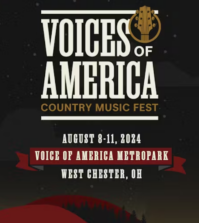
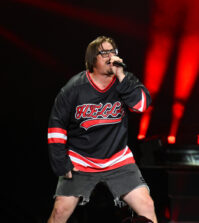
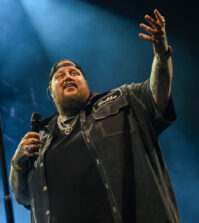
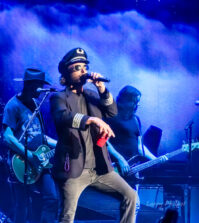
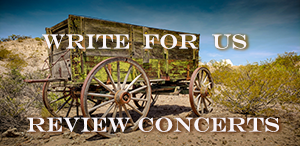
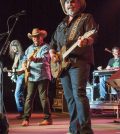
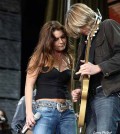
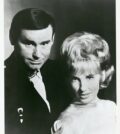
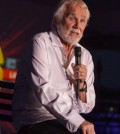
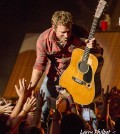
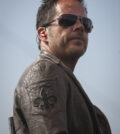
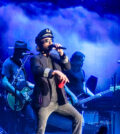
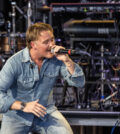
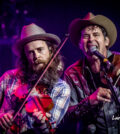
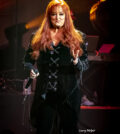
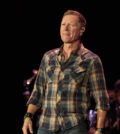
8 Comments